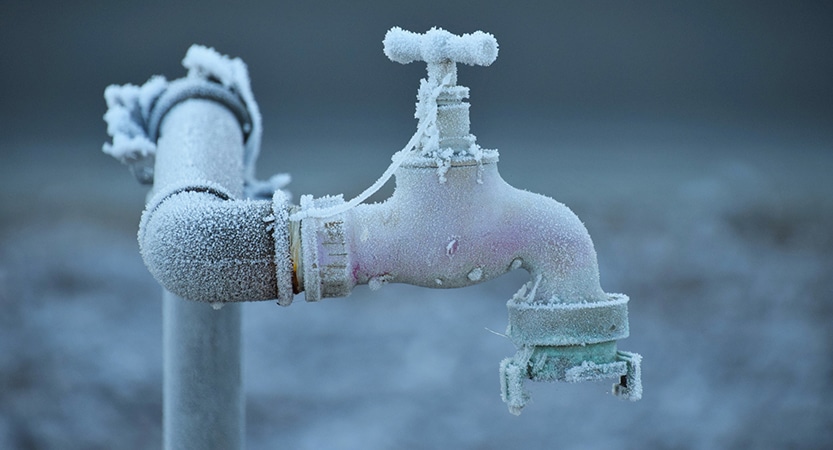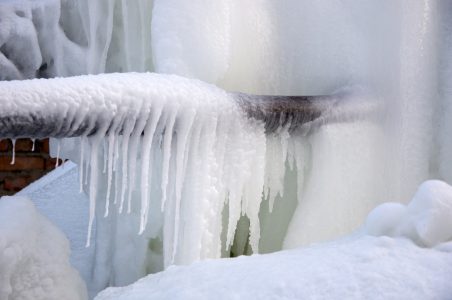Protecting Against Frozen Pipes in Cold Weather: Professional Strategies
Protecting Against Frozen Pipes in Cold Weather: Professional Strategies
Blog Article
What are your opinions regarding How to Prevent Your Pipes From Freezing?

Cold weather can wreak havoc on your pipes, particularly by freezing pipelines. Below's just how to stop it from occurring and what to do if it does.
Introduction
As temperature levels decline, the threat of icy pipes boosts, potentially causing pricey repairs and water damage. Recognizing exactly how to stop frozen pipes is important for homeowners in cool environments.
Prevention Tips
Protecting vulnerable pipelines
Cover pipes in insulation sleeves or utilize heat tape to safeguard them from freezing temperature levels. Concentrate on pipes in unheated or outside areas of the home.
Home heating techniques
Keep indoor areas effectively warmed, specifically areas with plumbing. Open cabinet doors to permit cozy air to flow around pipelines under sinks.
Exactly how to recognize icy pipes
Seek lowered water flow from taps, unusual odors or noises from pipes, and noticeable frost on exposed pipelines.
Long-Term Solutions
Architectural adjustments
Consider rerouting pipes away from exterior wall surfaces or unheated areas. Include extra insulation to attics, cellars, and crawl spaces.
Upgrading insulation
Buy top quality insulation for pipes, attic rooms, and walls. Appropriate insulation helps maintain consistent temperatures and decreases the risk of icy pipelines.
Safeguarding Outside Plumbing
Yard hoses and outdoor faucets
Detach and drain pipes garden tubes prior to winter. Set up frost-proof faucets or cover outside faucets with shielded caps.
Comprehending Frozen Pipes
What triggers pipelines to freeze?
Pipes freeze when exposed to temperatures below 32 ° F (0 ° C) for expanded periods. As water inside the pipes freezes, it increases, taxing the pipe walls and potentially triggering them to break.
Dangers and problems
Frozen pipes can result in supply of water disruptions, residential or commercial property damage, and costly repair services. Burst pipelines can flood homes and cause extensive architectural damage.
Signs of Frozen Water Lines
Identifying frozen pipelines early can avoid them from breaking.
What to Do If Your Pipes Freeze
Immediate activities to take
If you think frozen pipelines, maintain taps available to ease stress as the ice thaws. Make use of a hairdryer or towels taken in warm water to thaw pipelines gradually.
Conclusion
Preventing frozen pipelines needs proactive actions and fast responses. By understanding the causes, indicators, and safety nets, homeowners can protect their plumbing during winter.
5 Ways to Prevent Frozen Pipes
Drain Outdoor Faucets and Disconnect Hoses
First, close the shut-off valve that controls the flow of water in the pipe to your outdoor faucet. Then, head outside to disconnect and drain your hose and open the outdoor faucet to allow the water to completely drain out of the line. Turn off the faucet when done. Finally, head back to the shut-off valve and drain the remaining water inside the pipe into a bucket or container. Additionally, if you have a home irrigation system, you should consider hiring an expert to clear the system of water each year.
Insulate Pipes
One of the best and most cost-effective methods for preventing frozen water pipes is to wrap your pipes with insulation. This is especially important for areas in your home that aren’t exposed to heat, such as an attic. We suggest using foam sleeves, which can typically be found at your local hardware store.
Keep Heat Running at 65
Your pipes are located inside your walls, and the temperature there is much colder than the rest of the house. To prevent your pipes from freezing, The Insurance Information Institute suggests that you keep your home heated to at least 65 degrees, even when traveling. You may want to invest in smart devices that can keep an eye on the temperature in your home while you’re away.
Leave Water Dripping
Moving water — even a small trickle — can prevent ice from forming inside your pipes. When freezing temps are imminent, start a drip of water from all faucets that serve exposed pipes. Leaving a few faucets running will also help relieve pressure inside the pipes and help prevent a rupture if the water inside freezes.
Open Cupboard Doors
Warm your kitchen and bathroom pipes by opening cupboards and vanities. You should also leave your interior doors ajar to help warm air circulate evenly throughout your home.

We are very taken with Prevent Frozen Pipes and I hope you appreciated the entire blog post. Remember to take the time to distribute this blog post if you enjoyed it. We value your readership.
Details Here Report this page